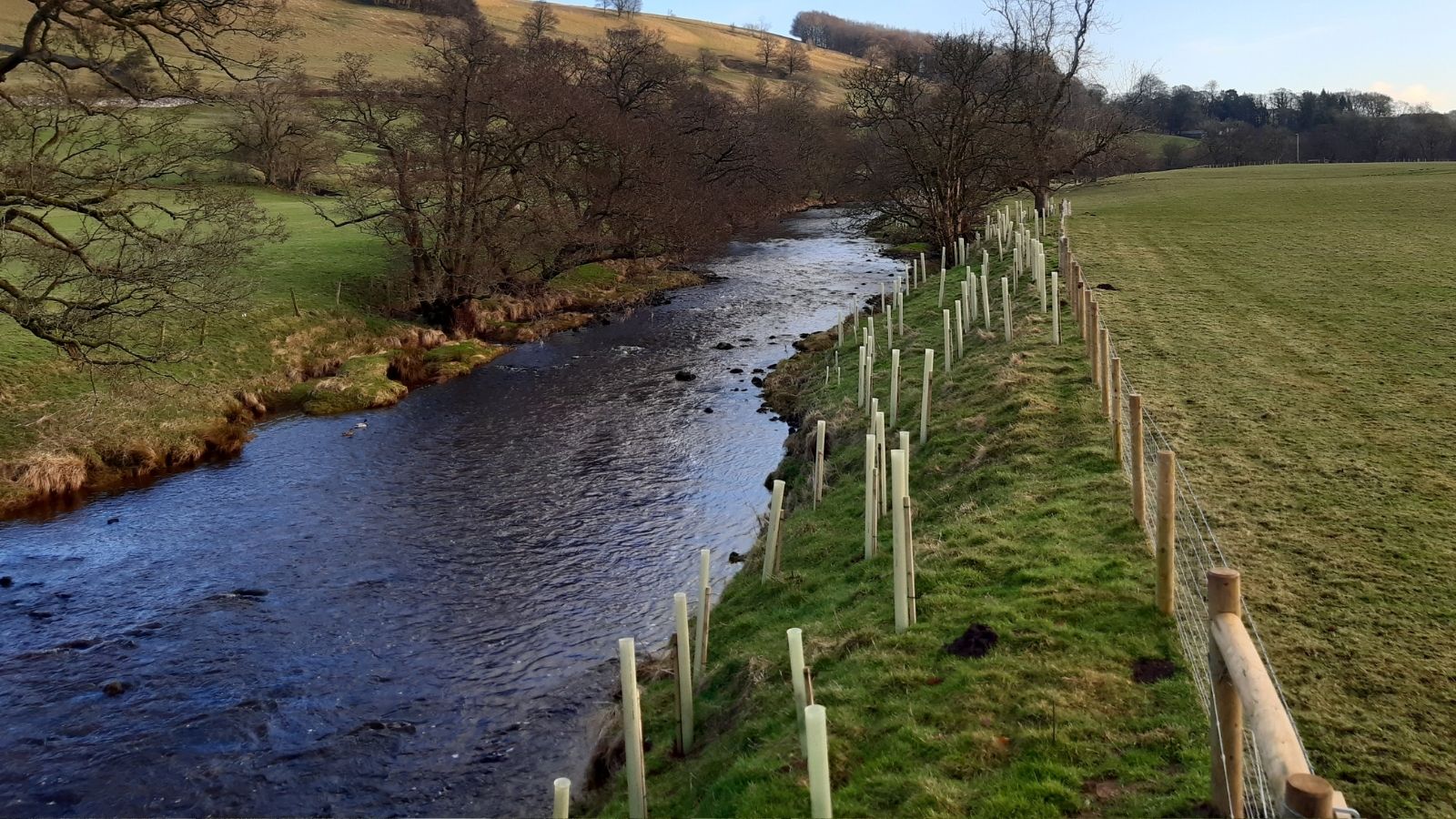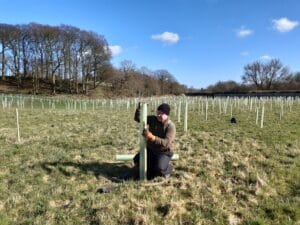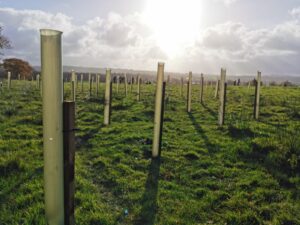If rivers are the heart of the natural world, then woodlands are the lungs. Together rivers and trees link up to provide a huge benefit to our environment and help to keep our planet healthy.

Ribble Rivers Trust are a data and evidence driven organisation. So, we use careful planning and research to develop and deliver projects. Thanks to this we can make sure we plant the right tree in the right place; avoiding damaging other important habitats and ensuring the maximum benefit.

Our work also focusses on a catchment-based approach. Essentially this means that if we improve our landscapes, then river health will also improve. This is because all landscapes are connected, and all the water that flows into the river crosses these landscapes.
So how do woodlands benefit rivers?
Carbon sequestration and mitigation- trees are a natural, ready to use weapon in our battle against climate change. Carbon is one of the major causes of climate change, and the main driver of the climate crisis. When trees respire, they take in carbon, lock it up, and use it to grow. Figures vary, but generally one tree can capture one tonne of carbon in its lifetime. To put that into perspective the average carbon footprint for a UK resident is ten tonnes per year.
Helping to reduce flood risk– trees can provide a natural flood defence. When planted near rivers and streams they can reduce the amount of water entering the river. The less water in a river, the lower the chance of it bursting it’s banks and causing floods. Plus, underground roots break up soil which means that more water can be absorbed into the ground, instead of running off into a river.
Homes and habitats– woodlands are home to an amazing number and variety of creatures. Oak trees alone can support up to 2,300 species. Insects, amphibians, fish, birds, and mammals all use trees for food, shelter, and homes. These include aquatic species, such as mayflies, who use trees as safe spaces to transform into adults, or fish like trout who use roots to hide from predators. Dead leaves and fallen branches also provide a handy food source for detritivores (the animals that break down dead organic material), which are then eaten by river animals.
Shade and shelter– climate change is already affecting our rivers. An increased water temperature of just a few degrees can have serious impacts on a fish’s ability to feed, breed, and even breathe. Back in 2018 we did some research which looked at water temperature differences at two sites, on the same stream, exactly one km apart. One site was shaded, the other wasn’t. Over 1km of unshaded river the temperature increased by 9°. By shading rivers, trees help to keep them cool and oxygen rich.
Sediments, pollutants, and erosion– trees and their roots create a barrier around rivers. This helps to reduce the amount of water run-off entering the river. As mentioned, this helps to reduce flood risk, but it also helps to reduce the amount of sediments, soils, and pollutants from entering the water. Strategic tree planting can help to create buffer strips which can have a really significant impact on the amount of harmful substances entering the river. Tree roots also bind soil together, helping to reduce riverbank erosion.

Of course, trees are a natural part of river systems, and this alone is an excellent reason for planting them. Varied, dynamic river systems should have live trees along the banks, fallen and dead trees in the water, meanders, pools, eddies, flood plains, and much more.
This year alone we’re planting over one hundred thousand trees, which will take our total so far to well over a quarter of a million- find out more on our dedicated woodland creation page.
You can also donate your very own tree for just £15- click here to find out how.
rivers and trees

